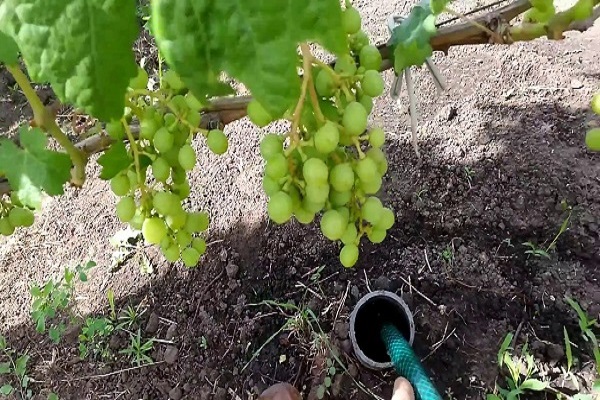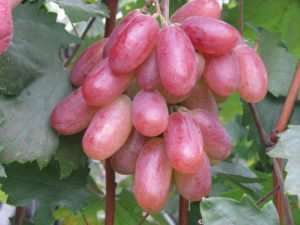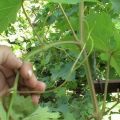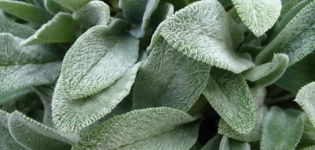How and when to treat grapes from gray rot, how to deal with drugs and folk remedies
Grapes are a tasty and healthy berry. A real storehouse of vitamins. To harvest a high yield, it is necessary to protect the grapes from gray and other rot on it; you need to know how and when to process the vine. When infected with a fungus, whole clusters suffer. Even young shoots and leaves. The task of the grower is to prevent diseases or to effectively deal with ailments that have appeared on the plant.
What are the types of rot?
There are several types of rot. The most common are gray, white, black rot.
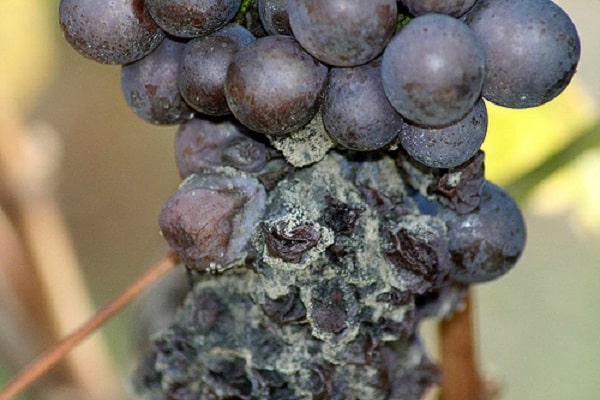
Gray rot on grapes is more common than other types. It can affect different parts of the plant. The fungus has a detrimental effect on the crop. Contaminated berries are not suitable for food or processing. If the disease is not stopped in time, it can affect the entire vineyard.
The appearance of white rot on grapes is no less dangerous. If the fungus is not detected in time, it will destroy most of the crop. Its danger also lies in the possibility of affecting other cultivated and wild plants.

Black rot that appears on grapes differs from others in that it hibernates on the vine. After the start of shoot growth, the plant becomes infected. This happens in late spring or early summer when it is warm and humid. This process is faster near water bodies.
Reasons for the appearance
The causes of rot infection are different. Why do grapes rot? To a greater extent, this is influenced by weather conditions. Prolonged rains favor the appearance of gray and black rot. White occurs after long dry days.
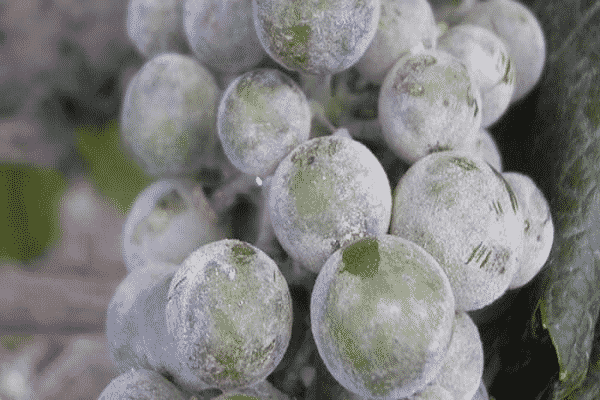
The whole plant is affected by gray rot. But it is especially dangerous for ripe berries. With an excess of moisture, the skin bursts, the fungus multiplies quickly in favorable conditions. The same result happens after hail falls, which injures the delicate skin of the berries. Wasps and garden pests cause damage.
When berries are affected by black rot, part of the crop dies. Shoots and leaves are not exposed to this danger.
In the spring, a white rot fungus awakens, overwintered in the bark and fallen leaves, which infects the shoots. Sunburn is another reason for the rapid spread of the disease. From infected berries that are not harvested in time, healthy fruits are infected.

Signs of disease
Signs of disease by different types of rot differ among themselves.
When affected by gray rot, the leaves first become covered with brownish spots with a gray bloom. Then they dry up. With a disease during the flowering period, the inflorescences dry out without having time to grow.If the bunches have managed to form, then during the defeat of this fungus on the berries dark spots appear, eventually turning into brown.
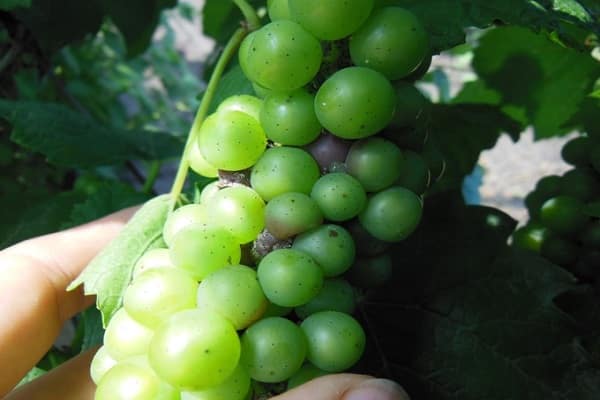
White mold is a sign of white rot on the affected berries. Their size decreases. Leaves become infected, darken and dry out. Less often, spots appear on the shoots.
With black rot, the berries darken, lose their elasticity, wither, wrinkle and rot or dry out. This fungus first appears on the leaves as small brownish spots with dark edges.

A detrimental effect on grapes
The environment has a detrimental or beneficial effect on the yield and quality of fruits. Only under optimal climatic conditions is the high quality of the grapes possible. It depends on the growing conditions of the plant from planting to harvest.
The volume of the crop is influenced by the moisture content in the soil, the number of sunny days. Drought, rainfall, hail and early frosts can threaten the growth of seedlings.
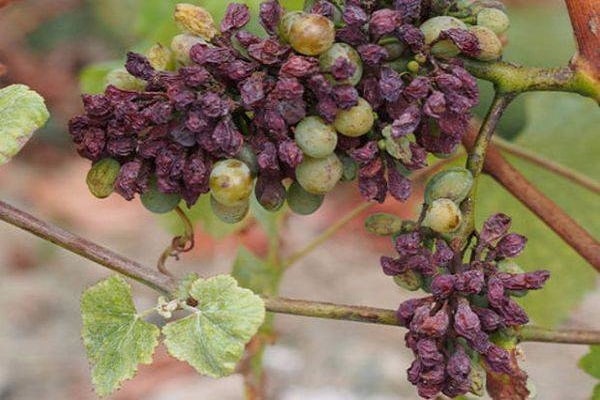
With prolonged rains it becomes cooler, the bunches do not ripen well. The berries have an insufficient sugar content, an excess of acid. As a result, their quality suffers. With too much water, grapes burst, providing a breeding ground for fungal diseases.
With prolonged drought, the growth and ripening of berries is delayed, metabolic processes are disrupted, moisture evaporates faster, the pulp loses its juiciness. This leads to the death of more than one hand.
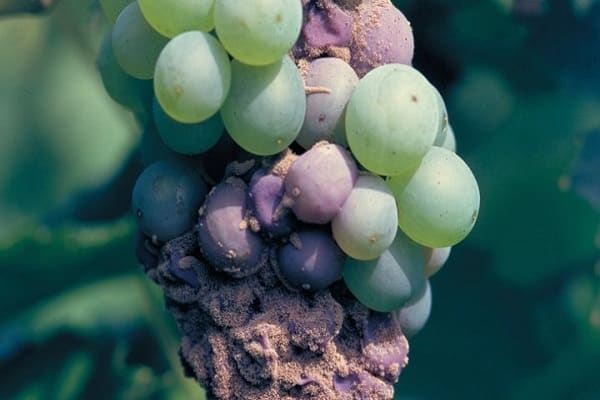
At high air temperatures, sunburn can occur, affecting not only leaves, but also berries. Damaged leaves are covered with bloom and brown spots. Then they dry up and fall off. This opens up other parts of the vineyard, which also deteriorate. A burn occurs more often after watering, when water droplets remain on the surface, which act as a natural lens.
To protect plants from sunburn, when watering in a hot period, it is necessary to avoid getting water on the leaves and berries. In the very sun - cover the bushes with a soft cloth.
Frosts also have a negative effect on the harvest. Even after a slight frost, the vineyard does not look its best. Sugar intake in berries is limited, they do not ripen. When the frosts intensify, berries are shedding. The leaves are gone.
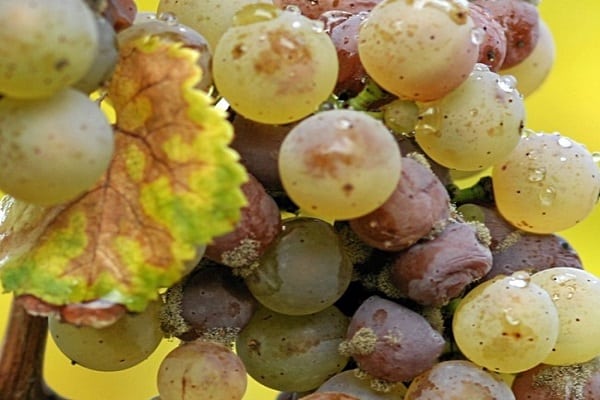
For high productivity, the vineyard needs good lighting. With a lack of light, the leaves become smaller, the shoots become thinner. Inflorescence development slows down. Bunches are worse formed, fruit buds are poorly laid. Flowers fall off, the yield is sharply reduced. Better illuminated vineyards growing on slopes and hills.
With proper vineyard care, the yield and quality will increase. Correct planting, soil cultivation, bush formation, pruning, pinching plays an important role.
If the vines are not tied up, they will touch the ground, contaminating the bunches. At the same time, the berry rots and cracks, becomes infected with mold, disappears.
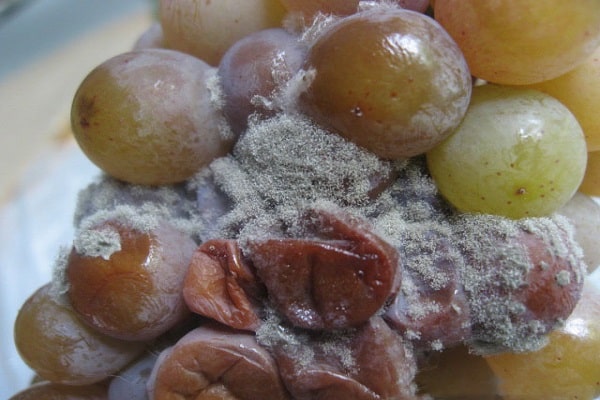
Most vulnerable varieties
Not all grape varieties are susceptible to rot damage, but there are shrubs that are especially sensitive to this disease.
Gray rot often affects grape varieties that have a dense bunch and a high degree of sugar content. For example, such grape varieties of early ripening as: Golubok, Pearl Saba, Rusbol, Muscat Tairovsky.
White rot is more common: Rhine Riesling, Seibel 1, Plavai, Alimshak.
Varieties susceptible to black rot: Italy, Hungarian Muscat, White Chassela, Saba Pearls.
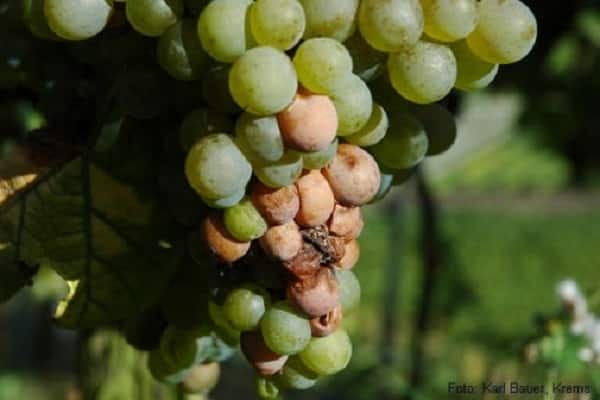
Methods and tips for treating rot
The main thing is to detect signs of infection in the early stages. This will help get rid of the disease and save most of the crop.
To treat white rot on grapes, the following control measures must be taken.
Before treatment with antifungal drugs, the bush must be freed from infected parts. If there are two or three berries damaged by rot on the bunch, you need to remove the entire bunch of grapes. The probability of spreading the infection to other fruits is high.
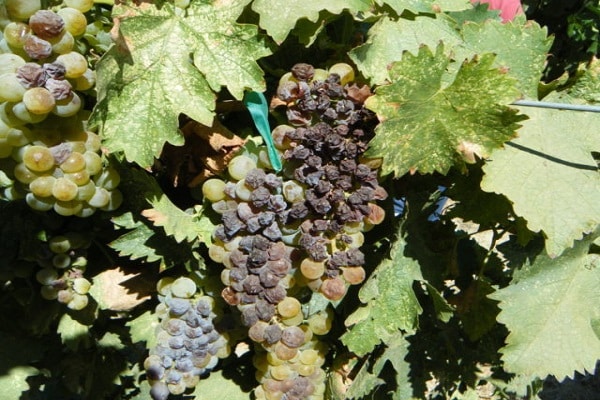
Bordeaux liquid is suitable for processing a vineyard. Spraying should be done early in the morning or in the evening. Preparations containing methyl theophanate or penconazole are considered to be an effective remedy for getting rid of shrubs from rot.
You can spray grapes from gray rot with such preparations: Smilix, Switch, Ronilan. Processing is carried out four times per season. Also, treatment can be carried out with copper sulfate. In ten liters of water, 15 grams of the drug are diluted.
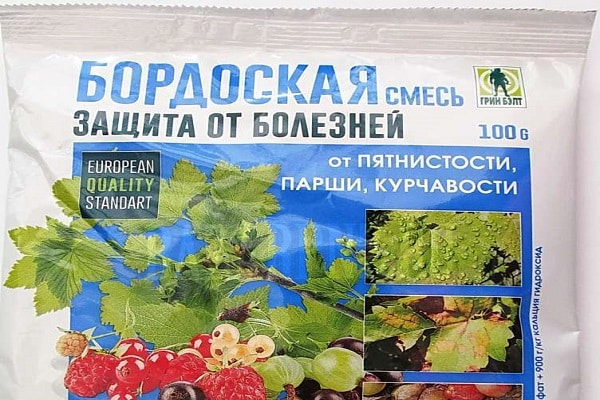
What to do if the vineyard is affected by black rot? First of all, you need to remove the damaged parts of the bush. Then process grapes special preparations such as: Antracol, Topaz, Bayleton. The first spraying is carried out after the leaves bloom, then before flowering, the third time during the growth of the berries.
The final spraying is done in the fall after harvest. If after the treatment of the grapes with preparations it has rained, it is necessary to repeat the spraying again.
Ways to combat and protect grapes from rot are in preventive spraying of the shrub once a month. Also, favorable conditions for the development of grapes will play an important role. As you know, it is easier to prevent a disease than to cure it.

Folk methods of struggle
Many summer residents are wary of treating grapes with chemicals. They ask themselves the question: how to deal with folk remedies with a fungus? There are several effective solutions that can help fight rot:

- Dissolve 50 grams of mustard powder in 5 liters of hot water. Insist in a dark place for two days. Dilute the prepared mustard solution 1: 1 with water before spraying.
- Add ten drops of iodine to a bucket of water, stir. Process the vineyard with the solution once a week.
- In ten liters of water, 70 grams of soda must be diluted. Spray the fruits and leaves of grapes with the resulting solution with a slight infection.
- Dilute a hundred gram piece of laundry soap in ten liters of water. Spray the grapes with soapy water in cloudy but not rainy weather.
- Dissolve 50 grams of soda ash in a bucket of water, pour 40 grams of oil. Treat the bushes with this solution once every ten days.
- In five liters of water, dilute a liter of kefir or sour milk, add twenty drops of iodine. Spray once a decade.
- Pour 100 grams of dried horsetail with a bucket of water, leave in a dark place for 24 hours. Then simmer for two hours over low heat. Strain the finished broth. After cooling, dilute with water 1: 5. The broth is stored for seven days in a cool place.
But do not forget that folk remedies can be used with a mild form of infection, or as prevention of a disease. In case of severe infection, it is worth using fungicides.
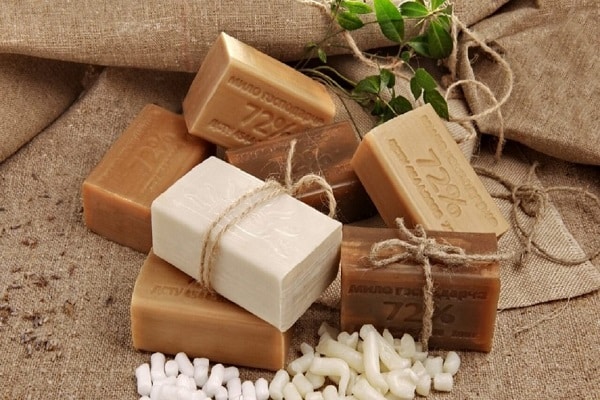
Prevention measures
Before growing grapes, it is necessary to choose a suitable variety, in accordance with the climatic conditions of its further growth. To protect and prevent diseases, it is necessary to create normal conditions for the growth and development of the grape bush:

- First of all, it is sufficient lighting.
- Timely pruning of the vine.
- Well-chosen fertilizer.
- It is not recommended to add organic fertilizer to the shrub.
- All baits should be produced according to the schedule.
- Keep the soil under the bush clean, preventing the leaves, fallen berries from rotting.
- Moderate watering, loosening the soil, good ventilation of the bunches, constant inspection and spraying of the plant.
The prophylactic agent can be used at a time when the shoots reach fifteen centimeters, and in the fall, after harvest. The shrub must be treated with copper-containing preparations or potassium iodide.
